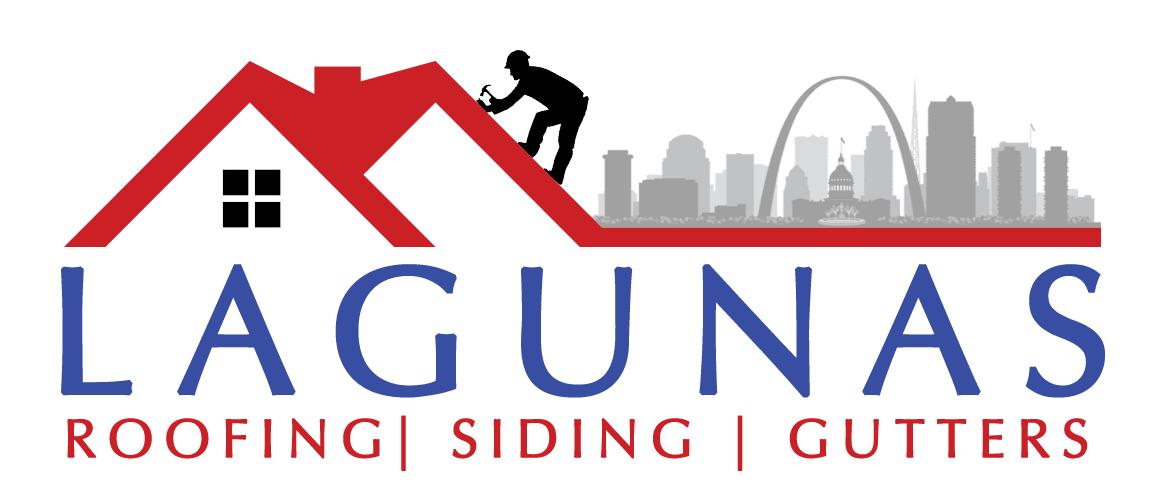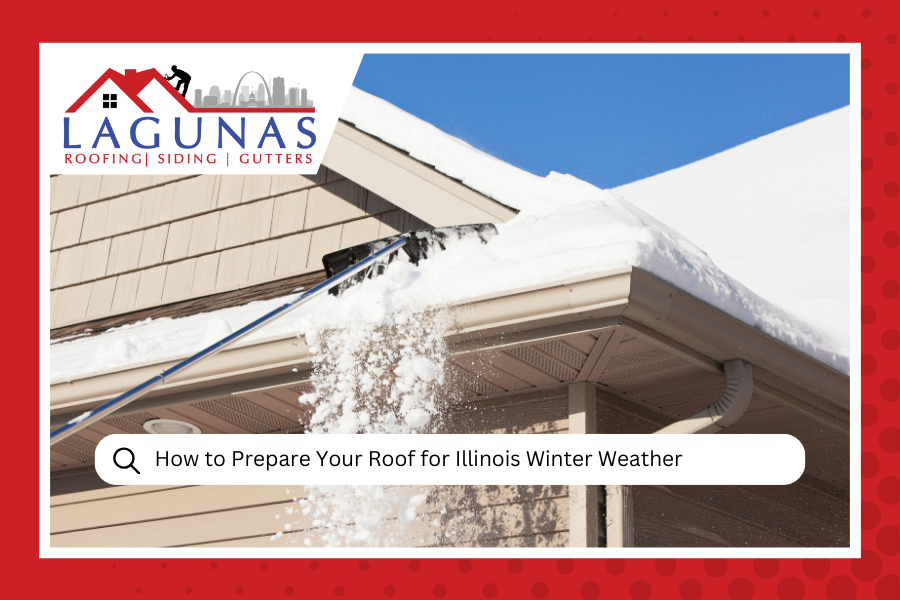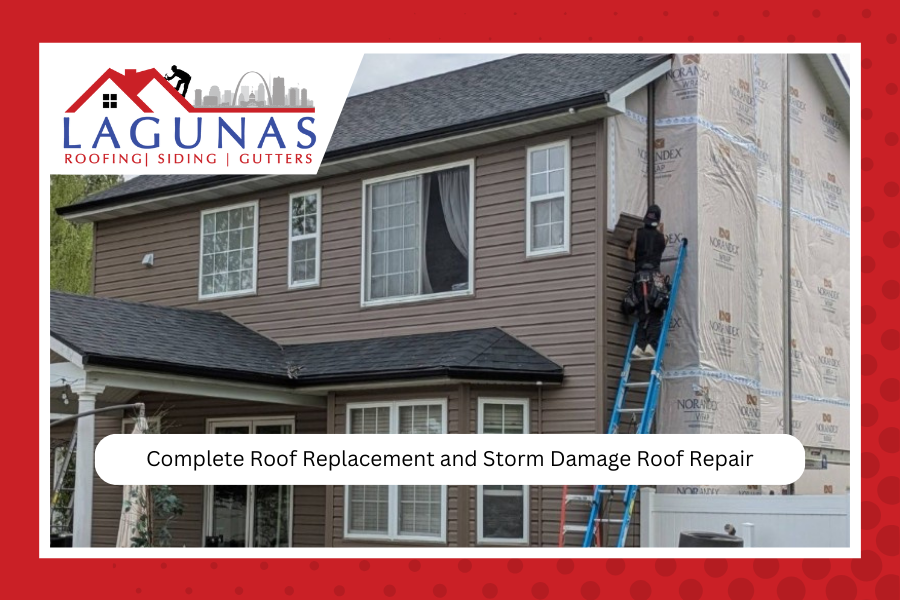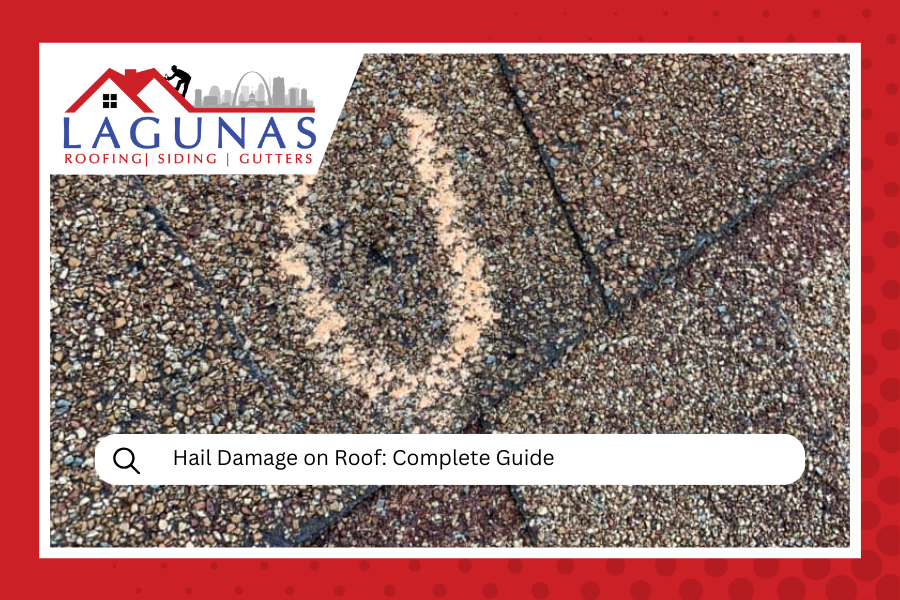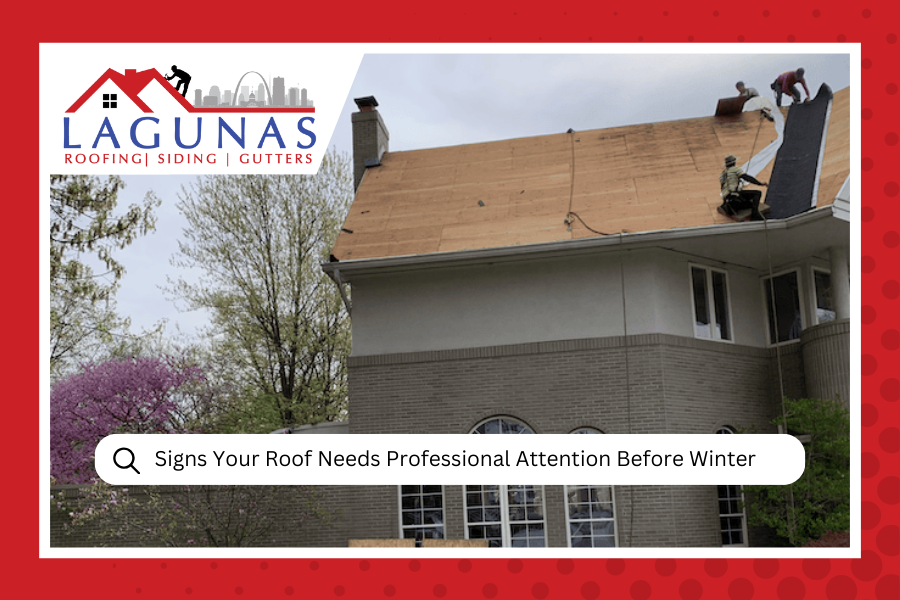
5 Warning Signs Your Roof Needs Professional Attention Before Winter
Jump to Section
Winter in Illinois doesn't mess around. One day you're enjoying crisp fall air, and the next, you're dealing with ice, snow, and those brutal winds that seem to find every weak spot in your home. Your roof? It's about to face its biggest test of the year.
We get it at Lagunas Roofing, there's nothing worse than discovering a problem when it's 20 degrees outside and snowing. That's why we always tell our clients in the St. Louis metro area: fall is your roof's annual checkup time. Think of it like getting your car serviced before a road trip, except this road trip lasts about four months and involves a lot more ice.
If you're wondering whether your roof is ready for what Mother Nature's about to throw at it, here are five warning signs that mean it's time to call in the professionals for roof repair before winter hits.
5 Critical Warning Signs at a Glance
Cracked, curling, or missing shingles create entry points for winter weather
Granules, rust stains, or ice dam evidence in your gutters
Water stains, peeling paint, or light visible in the attic
20+ years old with widespread granule loss and frequent repairs
Higher heating costs due to poor insulation or air leaks
Missing or Damaged Shingles Are Your Roof's Red Flag
Let's start with the obvious one that's not always so obvious. Missing shingles stick out like a sore thumb, but damaged ones? They're sneaky little troublemakers.
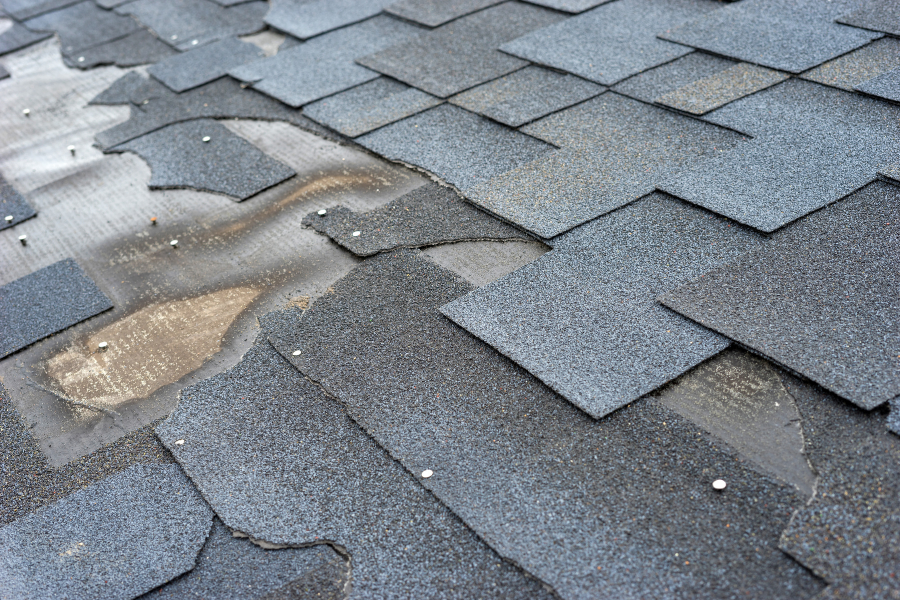
Look for shingles that are:
- Cracked or split
- Curling at the edges
- Missing granules (they'll look bald or discolored)
- Loose or sliding out of place
Even one damaged shingle is like having a small leak in a boat, it might seem minor now, but winter weather will turn that small problem into a big headache fast. Wind-driven snow has a talent for finding its way through the tiniest gaps, and ice? Well, ice expands and makes everything worse. Understanding common roofing issues can help you spot these problems early.
Ready to Get Your Roof Winter-Ready?
Don't wait until the first snowfall to discover roof problems. Our experienced team will spot issues before they become expensive emergencies.
Schedule Free InspectionGutters Telling Tales You Don't Want to Hear
Your gutters are basically your roof's diary, and sometimes they're telling stories you need to pay attention to. If you're finding shingle granules collecting in your gutters like sand at the beach, that's your roof literally shedding its protective layer.
Other gutter red flags include:
- Rust stains or water marks on your siding
- Gutters pulling away from the house
- Ice dams from previous winters (those pretty icicles aren't so pretty when they're damaging your roof)
- Overflowing water during rain
We've seen too many homeowners ignore gutter issues, thinking they'll deal with it "next spring." Trust us, winter doesn't wait for your schedule. Poor drainage leads to ice dams, and ice dams lead to water backing up under your shingles. Before you know it, you're dealing with water damage that could have been prevented.
Interior Signs Your Roof Is Crying for Help
Sometimes your roof tries to get your attention from the inside. If you're noticing any of these indoor warning signs, your roof is basically waving a white flag:
Ceiling and Wall Issues
- Water stains (even small ones that "haven't gotten worse")
- Peeling paint or wallpaper near the ceiling
- Sagging spots in the ceiling
- Musty odors in the attic or top floors
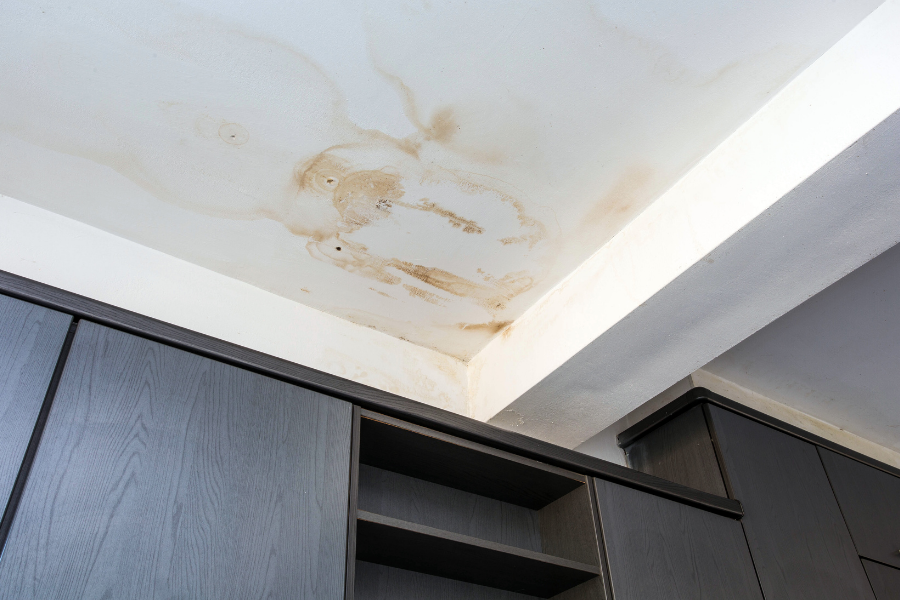
Light Where Light Shouldn't Be
Pop your head into the attic during daylight hours. See any light coming through? That's not mood lighting, that's trouble. If light can get in, water definitely can too.
The thing about interior signs is they usually mean the problem has been going on for a while. What starts as a small leak during fall rains becomes a much bigger issue when snow melts and refreezes repeatedly throughout winter.
| Warning Sign | What to Look For | Urgency Level | Typical Winter Impact |
|---|---|---|---|
| Missing Shingles | Bare spots, exposed underlayment | HIGH | Direct water/snow entry |
| Damaged Shingles | Cracks, curling, granule loss | HIGH | Accelerated deterioration |
| Interior Water Stains | Brown/yellow ceiling spots | HIGH | Structural damage, mold |
| Gutter Granules | Sand-like particles in gutters | MEDIUM | Shingle failure by spring |
| Higher Energy Bills | Increased heating costs | MEDIUM | Ice dam formation |
| Roof Age (20+ years) | Widespread wear, frequent repairs | MONITOR | Reduced winter performance |
Your Roof's Age Is Showing
Nobody likes talking about age, but when it comes to roofs, it matters. Most asphalt shingle roofs last about 20-25 years, and if yours is getting up there, winter might be the season that pushes it over the edge.
Signs your roof might be showing its age:
- Multiple repairs needed each year
- Widespread granule loss
- Shingles that look tired and weathered
- Friends and neighbors getting new roofs (often a sign your whole neighborhood's roofs were installed around the same time)
Here's the thing about older roofs and winter weather, they don't play well together. What a newer roof can handle easily becomes a major challenge for an aging roof system. If you're on the fence about whether your roof can handle another Illinois winter, it's worth having our team take a look. We'll give you the straight story about whether you need repairs or replacement.
Energy Bills That Make You Do a Double-Take
This one catches a lot of people off guard. If your heating bills have been creeping up each year, and you can't blame it entirely on energy costs, your roof might be the culprit.
Poor roof insulation or air leaks can cause:
- Uneven temperatures throughout your home
- Ice dams (warm air escaping melts snow, which refreezes)
- Your heating system working overtime
- Higher energy bills that seem to come out of nowhere
We've helped plenty of homeowners who thought they needed a new furnace, only to discover their roof replacement was the real solution to their energy problems.
What to Do When You Spot These Warning Signs
Found one or more of these issues? Don't panic, but don't wait either. Here's your action plan:
- Document everything(Take photos of any visible damage)
- Schedule a professional inspection(This isn't the time for DIY assessment)
- Ask about timing(Some repairs can wait until spring, others can't)
- Get a clear plan(Understand what needs immediate attention vs. what can be scheduled)
The good news? Most roofing issues are fixable, and catching them before winter means you're dealing with repairs instead of emergencies. We've seen too many situations where a $500 repair in October becomes a $5,000 problem by February.
Why Professional Assessment Matters
Look, we get it. There are plenty of DIY tutorials out there, and your neighbor's brother-in-law probably knows "a thing or two about roofs." But here's the reality, professional roofing safety is critical and professional roofers see things differently.
We know what to look for, where problems typically develop, and most importantly, we understand how different issues interact with each other and with winter weather. What looks like a minor problem to an untrained eye might be a symptom of a much larger issue.
Plus, if you're dealing with insurance claims for storm damage, having professional documentation makes the whole process smoother. We've helped countless clients navigate the insurance process, and proper documentation from the start makes a huge difference. Learn more about how to get insurance to pay for roof replacement when you have legitimate damage.
Don't Let Winter Catch You Off Guard
If any of these warning signs sound familiar, it's time to take action. Our experienced team will assess your roof's condition and create a plan that fits your budget and timeline.
Get Your Free Roof AssessmentServing the St. Louis metro area with honest, reliable roofing solutions since 2021
Frequently Asked Questions
Which of these five warning signs is most urgent to address before winter?
Missing or damaged shingles are typically the most urgent because they create direct pathways for water and wind-driven snow to enter your home. Even one missing shingle can lead to significant interior damage during Illinois winter storms. If you spot damaged shingles among these warning signs, prioritize getting them addressed first.
If I notice granules in my gutters but my shingles look fine, should I be concerned?
Yes, granule loss is often one of the earliest warning signs of aging shingles, even when they appear intact from ground level. Granules protect your shingles from UV rays and weather damage. Significant granule accumulation in gutters during fall cleaning often indicates your shingles are approaching the end of their effective lifespan and may not handle winter weather as well as expected.
How can I tell the difference between normal settling cracks and ceiling damage from roof leaks?
Roof-related ceiling damage typically appears near exterior walls, follows the roofline pattern, or shows up after heavy rains or snow melts. The stains are often brown or yellowish and may have a ring pattern. Normal settling cracks are usually straight lines that appear gradually over time. If you notice any ceiling discoloration along with musty odors or peeling paint, that strongly suggests roof-related moisture issues.
What's the connection between higher energy bills and these roof warning signs?
Several of these warning signs directly impact your home's energy efficiency. Damaged shingles and interior air leaks allow warm air to escape, making your heating system work harder. This escaped warm air also contributes to ice dam formation when it melts snow on your roof. If you're noticing both higher energy bills and any of these warning signs together, your roof is likely the culprit behind both problems.
Winter's coming whether we're ready or not, but your roof doesn't have to face it unprepared. If any of these warning signs sound familiar, give us a call at Lagunas Roofing. We'll take a look, give you honest feedback, and help you create a plan that makes sense for your situation and budget.
After all, there's nothing better than sitting inside your warm, dry home during the first big snowstorm, knowing your roof has everything under control.
